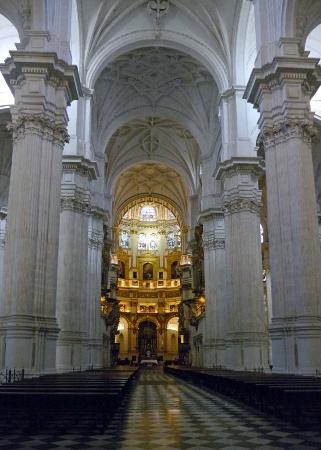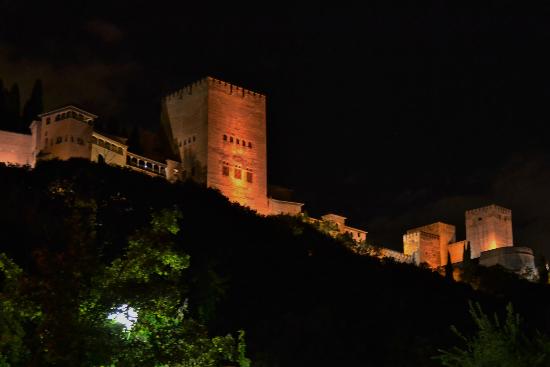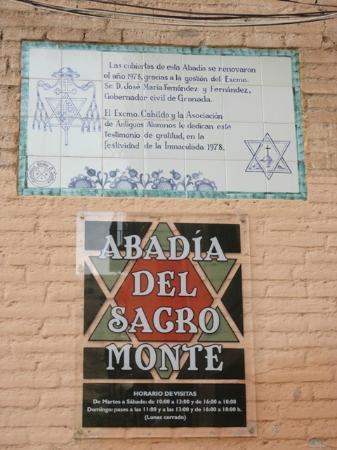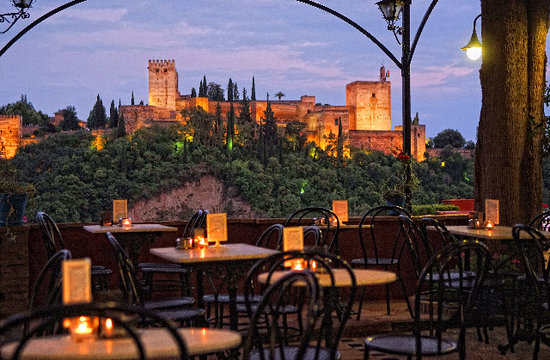One of the historic jewels of Andalusia, Granada was under Caliphate/Moorish rule for nearly 800 years until the Emir there gave it up to King Ferdinand and Queen Isabella in 1492. Even after all these years, the Albayzin district in Granada has preserved all the Moorish buildings, including the crown of them all, the Alhambra.
This photo of The Alhambra is courtesy of TripAdvisor
The Alhambra was once a walled in fortress of the Nasrid sultans who ruled this area during the Caliphate years. Eventually, after they were booted from the Iberian peninsula and the Reconquista fully commenced, the Catholic monarchs appropriated much of the property. There were some changes, as one of the Holy Roman Emporers decided he was going to tear down some of it, but it still stands gloriously on a hilltop at the base of the Sierra Nevada mountains.
Granada also has a cathedral in the center of town.

This photo of Cathedral and Royal Chapel (Capilla Real) is courtesy of TripAdvisor
The cathedral is actually built right on top of a mosque. Nothing says conquered like building a religious house on top of your vanquished enemy's, no? The outside facade is Spanish Renaissance which looks markedly different than the baroque cathedrals elsewhere in Europe from the same time period. The inside of the church features five (count 'em!) naves instead of a fairly standard three. This cathedral had an outstanding seven architects (!) who each brought different elements to the building, including the Capilla Real (royal chapel) where the mausoleums of King Ferdinand and Queen Isabella are located. The inside of the church has the many of the same elements you can find if you've ever been to churches in France or Italy. Very ornate gilded decoration inside the cupolas, soaring columns to dramatic ceilings almost as high as the sky, and beautiful stained glass windows. This church was built as a power symbol of the Reconquista and its dominance over the local skyline is pretty recognizable.
This photo of Cathedral and Royal Chapel (Capilla Real) is courtesy of TripAdvisor
Another nifty place to visit in Granada is the Abadia del Sacrmonte. According to local lore, in the 16th century locals found some caves in the hillside with some remains inside that were very old. Legend has it these remains were of St. Cecilio, who is the patron saint of Granada, and who was sent to Spain by St. Peter to evangelize it. So the local bishop built an abbey on top of this holy place, in honor of their saint. One of the things that will quickly become apparent to you is the six sided star that is repeated all over the abbey in decoration. Many people mistake this for the Star of David in the Jewish faith, but its not. This symbol was once use as a mark of intelligence or knowledge during Roman times, so keeping with the theme the bishop who built the abbey decided to keep on using it.
This photo of Abadia del Sacromonte (Sacromonte Abbey) is courtesy of TripAdvisor
After a day of site seeing, relax at the Carmen Mirador de Aixa, with a full view of the Alhambra while you drink your tasty Spanish sangria and trying jamon, which is pretty a Spanish obsession. Lunch might be a cheaper option for you, as the view is going to bring your costs up. The food is good and the service is great but prepare to bust out that wallet at the end.
This photo of Carmen Mirador de Aixa is courtesy of TripAdvisor
For a little bit of ethnic fun, make sure to visit the Alcaiceria, which is the old Moorish silk market. Now its a jumble of market stalls invoking thoughts of a sook in Morocco, where you can buy bargain goods from Arab traders.
If you're not quite sure what to do here in Granada, there are many guided tours you can do. Make sure to check Trip Advisor and Viator to read reviews before you book. Tours cover everything from walking tours through Albayzin, to olive oil tours throughout the countryside. Bike tours, paragliding and segways...your adventure awaits!






